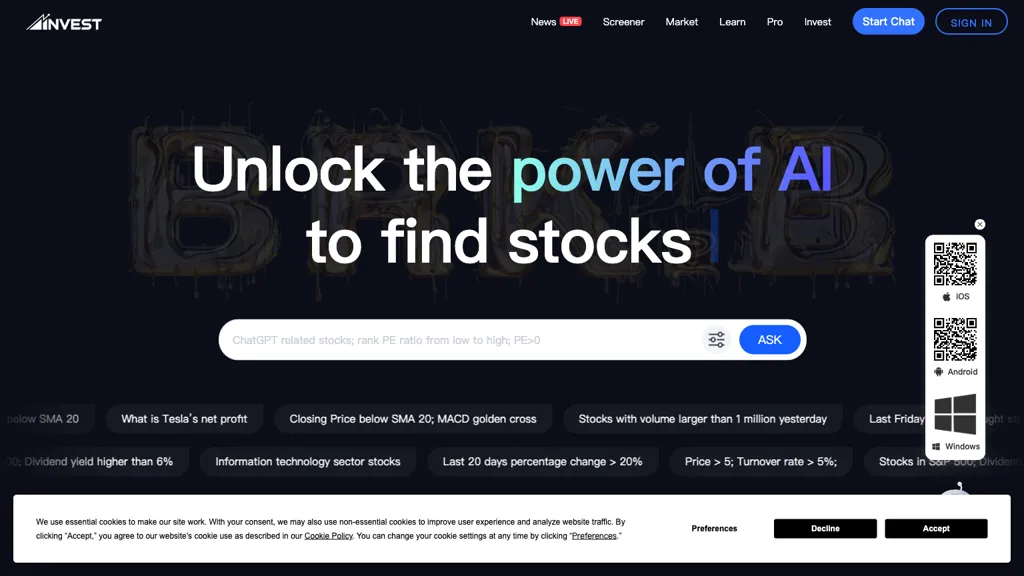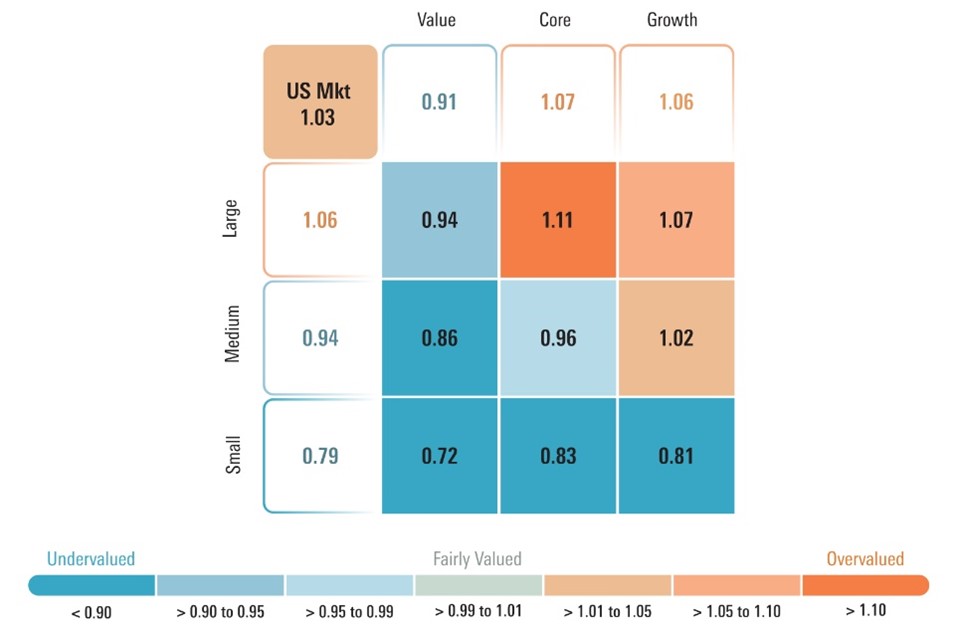20 Top Info On Choosing AI Stock Trading Platform Sites
20 Top Info On Choosing AI Stock Trading Platform Sites
Blog Article
Top 10 Tips When Evaluating Ai Trading Platforms To Determine Their User Interfaces And Experiences
The User Interface (UI) and User Experiences (UX) in AI trading platforms that predict/analyze the price of stocks play an important function in ensuring efficiency as well as satisfaction. A poorly designed user interface may hinder decisions even when the AI models behind the interface are robust. Here are the top 10 tips to evaluate the UI/UX.
1. Assess the sensitivity of your intuition and ease of Use
Navigation: Make sure the platform is easy to use, with menus and buttons that are simple to comprehend as well as workflows.
Learning curve: Measure how fast an individual can master a system and learn to use it without extensive instruction.
Make sure you have consistent design styles (e.g. color schemes and button styles) across all platforms.
2. Make sure you check for customizability.
Dashboard customization: Find out if the dashboard can be personalized to show relevant metrics, charts, or data.
Layout flexibility: Ensure the platform you use allows you to reorder widgets as well as tables, charts and charts.
Themes and preferences: Check that the application supports dark or light modes, or other preferences.
3. Visualize the data with the Assess Tool
Chart quality - Ensure that the website has interactive charts in high resolution (e.g. candles and line charts) that include panning, zooming, and other features.
Visual clarity Ensure that all data is clearly presented, including labels, legends and tips-offs.
Updates in real-time: Make sure that visualizations are updated in real-time to reflect market trends.
4. Test Responsiveness & Speed
Even when working with massive datasets and complex calculations, the platform should load quickly.
Performance in real time: Make sure your platform is able to process data feeds instantly without delays or lags.
Cross-device Compatibility: Make sure that the platform works seamlessly with various gadgets (desktops or mobiles).
5. Evaluate accessibility
Mobile App: Make sure the platform provides an application for trading via mobile that offers full functionality.
Keyboard shortcuts: Make sure the platform supports keyboard shortcuts for power users.
Accessibility Features: Verify whether the platform is compliant with accessibility standards.
6. Review the search and filtering functionality
Search performance: Ensure that the platform allows users to quickly search for stocks, indices or any other assets.
Advanced filters: See if you can narrow down your results by using filters (e.g. sector or market capital, performance metrics).
Saved search: Verify whether the platform allows users save frequently used searches as well as filters.
7. Look for Alerts or Notifications
Customizable notifications: Allow users to create alerts that are specifically tailored to the conditions of their needs.
Notifications delivery: Determine if alerts can be delivered via different channels (e.g. SMS, email, app notifications).
Check for promptness and accuracy of alerts.
8. Assess the integration with other tools
Broker integration - Make sure that your platform is seamlessly integrated with your brokerage to allow for quick trade execution.
API access Find out whether APIs are available to advanced users that want to build customized workflows or tools.
Third-party integrations: Determine if the platform supports integrations with other software (e.g., Excel, Google Sheets and trading bots).
9. Assess Help and Support Features
Tutorials for onboarding Find out if new users are able to access tutorials.
Help center: Ensure that the platform is well-equipped with a support center or knowledge base.
Customer support - Check whether the platform provides an efficient assistance (e.g. email, live chat).
10. Test Overall User Experience
Feedback from users Take note of testimonials and research to determine the satisfaction of customers.
Trial period: Take advantage of a demo free or trial to evaluate the usability of the platform.
Verify the platform's error handling.
Bonus Tips
Aesthetics. Functionality is essential however, a visually pleasing layout can boost the user experience.
Performance under pressure - Test the platform's stability and responsiveness in market conditions with high volatility.
Check the community and forums to find out if there's a user group in which members can exchange tips and feedback.
These tips will help you evaluate the UI/UX for AI trading platforms that predict and analyze stocks and ensure that they are user friendly, efficient and in line with your trading needs. A great UI/UX is an extremely effective tool that can help you make more informed decisions and make better trades. Have a look at the best ai for stock trading examples for blog examples including ai stock market, ai trade, chatgpt copyright, trading with ai, ai stock trading, chart ai trading assistant, ai stock market, chart ai trading assistant, ai stock market, ai for trading and more.
Top 10 Tips For Assessing The Risk Management Of Ai Stock Predicting/Analyzing Trading Platforms
Any AI platform for analyzing or predicting stocks must include risk management that is crucial for protecting your investment and minimizing losses. A platform that has robust risk management tools will help you navigate market volatility and make well-informed decisions. Here are the top ten suggestions to evaluate the risk management capabilities of these platforms.
1. Study Stop-Loss Features and Take Profit features
Customizable Levels: Ensure that the platform lets you set individual stop-loss levels and take-profit targets for strategies or trades.
Make sure you are able to use trailing stops. They will automatically adjust if the market moves towards your advantage.
Check if your platform allows you to place stop-loss orders that ensure the close of the trade at the price specified, even on volatile markets.
2. Assess Position Sizing Tools
Fixed amount: Make sure that the platform lets you define position sizes based on a fixed monetary amount.
Percentage of Portfolio Determine whether it is feasible to set the position size in percentage of your total portfolio in order to manage risks in a proportional way.
Risk-reward ratio: Verify whether the platform allows setting risk-reward ratios on individual trades or strategies.
3. Make sure you have Diversification Support
Multi-asset Trading to diversify your portfolio of investments, be sure that the platform you choose allows trading across multiple asset classes.
Sector allocation: Find out whether the platform offers tools for monitoring and managing exposure to sectors.
Geographic diversification: Verify if the platform allows trading in international markets to spread the geographic risk.
4. Evaluation of leverage and margin controls
Margin requirements: Ensure the platform clearly outlines any limitations on margins when trading leveraged.
Leverage limits: Check whether the platform permits users to set leverage limits to limit the risk exposure.
Margin call: Make sure whether the platform provides timely notifications for margin calls. This can help to avoid account closure.
5. Assessment and reporting of risk
Risk metrics: Ensure that the platform offers key risk indicators (e.g., Value at Risk (VaR) Sharpe ratio drawdown) for your portfolio.
Evaluation of scenarios: Make sure the platform you're using lets you simulate market scenarios and analyze the risks.
Performance reports - Verify that the platform has comprehensive performance reports, which include the risk-adjusted returns.
6. Check for Real-Time Risk Monitoring
Portfolio monitoring: Ensure that the platform offers real-time monitoring of the risk exposure to your portfolio.
Alerts and notifications: Determine if the platform provides real-time alerts for risks-related events (e.g. margin breaches or stop-loss triggers).
Risk dashboards - Examine to see if your system has customizable risk dashboards. This will provide you with more information about the risks you are facing.
7. Tests of Backtesting and Stress Evaluation
Stress testing - Make sure that your platform allows you stress test strategies and portfolios under extreme market conditions.
Backtesting: Determine if the platform supports backtesting strategies based on previous data to evaluate the risk and effectiveness.
Monte Carlo simulators: Verify that the platform uses Monte Carlo to simulate a number of possible outcomes to allow you to evaluate risk.
8. Verify Compliance with Risk Management Regulations
Regulatory compliance: Verify that the platform adheres to applicable risk-management regulations (e.g. MiFID II, Reg T, in the U.S.).
Best execution: Make sure that the platform adheres to best execution practices, ensuring transactions are executed at the best possible price, minimizing slippage.
Transparency. Check that the platform is transparent and makes clear disclosures of potential risks.
9. Check for user-controlled risk parameters
Custom risk rules: Ensure that the platform allows you to define custom risk management rules (e.g., the maximum daily loss, or maximum size of position).
Automated Risk Controls Find out whether the platform has the capability to enforce risk management policies that are based on parameters pre-defined.
Manual overrides: Ensure that the platform supports manual overrides in emergency situations.
Study Case Studies, User Feedback, and Case Studies
User feedback: Use user reviews to determine the platform's capacity to manage risk.
Case studies Find case studies, or testimonials that show the platform's capability to control the risk.
Community forums: See if a platform has members who want to share strategies and strategies for managing risks.
Bonus Tips:
Free Trial: Try out the platform's features for risk management in real situations.
Customer Support: Verify that the platform can provide a comprehensive customer support solution for any risk management related concerns or questions.
Educational resources: Check whether the platform offers educational resources or tutorials on risk management best practices.
If you follow these guidelines to evaluate the potential risk managing capabilities of AI platform for analyzing and predicting stocks and ensure you select a platform that helps safeguard your investment and reduce the possibility of losses. To ensure that your trading is successful and manage volatile markets, strong risk management tools are crucial. See the best great post to read about ai tools for trading for site tips including ai for trading stocks, ai in stock market, free ai tool for stock market india, best ai for stock trading, stocks ai, free ai stock picker, ai stock price prediction, stock predictor, chart analysis ai, ai trading tool and more.